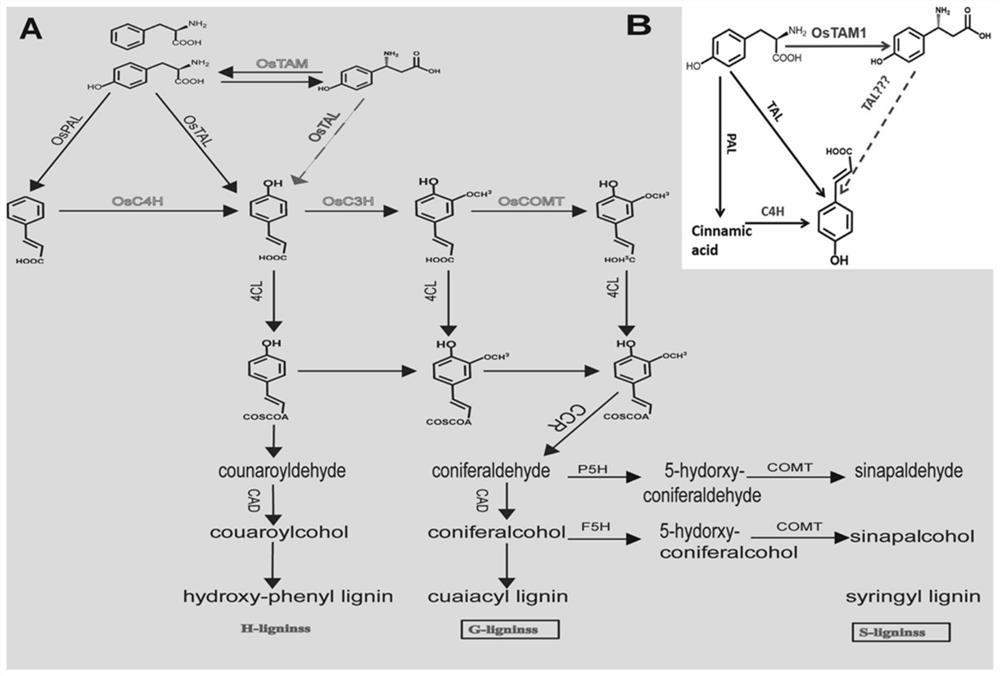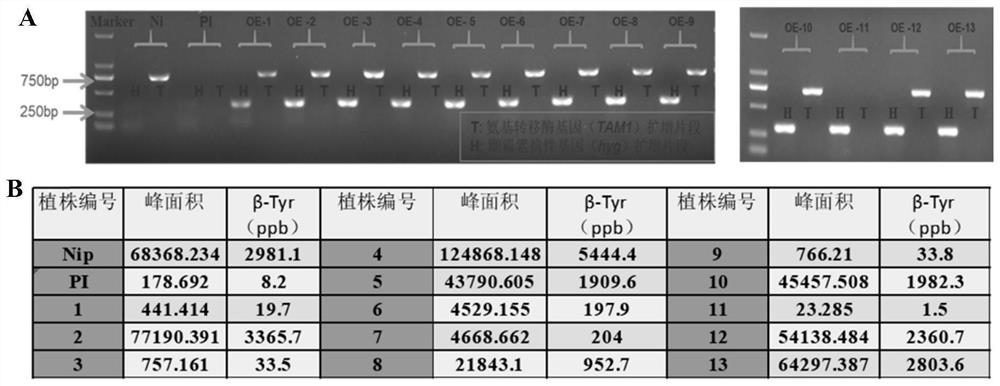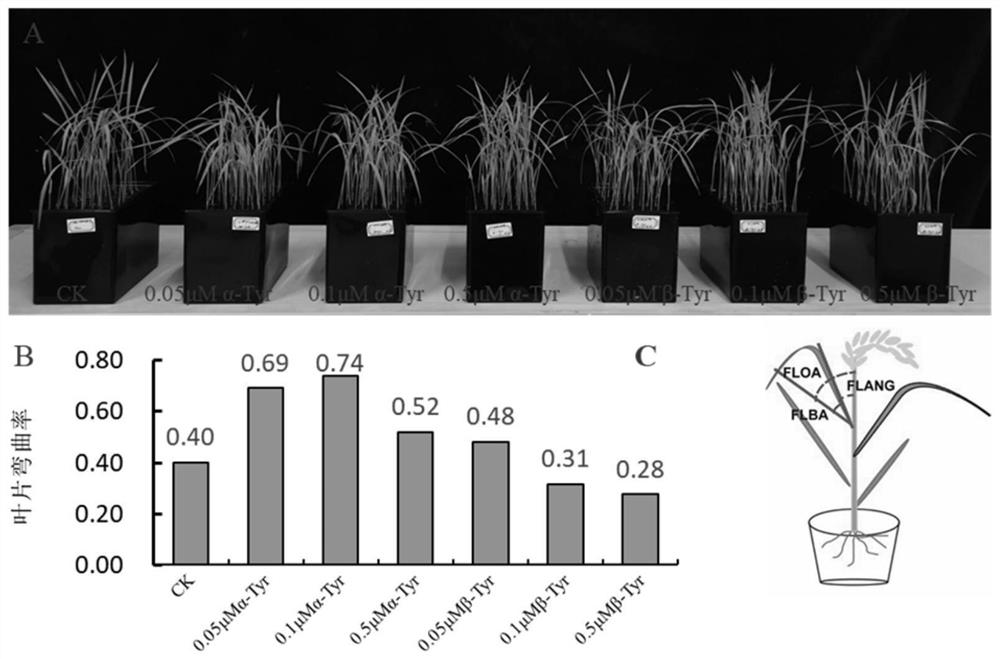Application of rice OsTAM1 gene in regulation and control of plant leaf included angle
A technology of plant leaves and plant leaves, which is applied in the application field of rice OsTAM1 gene in regulating the angle of plant leaves, can solve the problems such as unclear molecular mechanism, and achieve the effects of improving catalytic activity, increasing mechanical strength, and increasing planting density
- Summary
- Abstract
- Description
- Claims
- Application Information
AI Technical Summary
Problems solved by technology
Method used
Image
Examples
Embodiment 1
[0054] The construction of embodiment 1 overexpression OsTAM1 gene plant
[0055] 1.1 Overexpression of OsTAM1 gene
[0056] Take the rice leaves of the rice variety Nipponbare (Ni) at the tillering stage, use Takara’s RNA extraction reagent and extract total RNA, and use Takara’s reverse transcription kit to reverse transcribe the total RNA into cDNA, in the Rice Genome AnnotationProject (http: / / rice.plantbiology.msu.edu / ), input the gene accession number (LOC_Os12g33610) of OsTAM1 to obtain the CDs sequence (SEQ ID NO.1) of the gene, and design a synthetic primer pair (33610F: 5′- ATGAGGCTTGCCAAGGA GCA-3'; 33610R: 5'-GCAGCGCTAGCAGATCGTC-3'), after obtaining the cDNA of the OsTAM gene by PCR amplification, the target fragment was connected to the pMDC32 vector by the method of seamless cloning (the pMDC32 vector was purchased from Boyuan Biological Company Obtained), after confirming that the carrier was successfully constructed by PCR amplification and sequencing, the cons...
Embodiment 2
[0071] The effect of embodiment 2β-Tyr on rice seedling leaf erect
[0072] 2.1 Effect of exogenous addition of β-Tyr on rice seedling leaf erection
[0073] 2.1.1 Take PI (without β-Tyr) seeds to germinate in a 30°C incubator, and then sow them in a 96-well plate, such as image 3 In the black box shown in A, 7 plates were sown together. After adding water and culturing for three days, it was replaced with rice basic culture medium, and β-Tyr (ie 3-amino-3-(4-hydroxyphenyl) Propionic acid, molecular formula C 9 h 11 NO 3 ; CAS No.: 6049-54-3) and α-Tyr (2-amino-3-p-hydroxyphenylpropionic acid), so that the final concentrations were 0 μM, 0.05 μM, 0.1 μM, 0.5 μM, wherein 0 μM was the control group (CK), and the rest are treatment groups. After cultivating for 10 days, observe the influence of different treatments on the leaf angle and count the percentage of the leaf bending number on the 10th day. The leaf curvature refers to the leaf angle greater than 10° is regarded a...
Embodiment 3
[0087] Example 3 Effect of β-Tyr on Flag Leaf Angle at Flowering Stage of Rice
[0088] 3.1 Continue culturing the control PI and overexpression plants (OE-1, OE-2, OE-3) in 2.2 for half a month, and then transplant them into the field for planting. During this period, pay attention to water, fertilizer and pest management. The phenotypes of each line were photographed at the flowering stage of rice, and the results were as follows: Figure 6 shown, and measure the leaf opening angle of rice, the flag leaf inclination angle and leaf opening angle of the paddy rice that adopt protractor to measure (the rice leaf angle refers to image 3 C). Take three lines of control and overexpression plants respectively, each line has 15 repetitions, and each plant measures the flag leaf opening angle and flag leaf angle of 5 rice tillering stages, and the statistical results are as follows: Figure 7 A and 7B are shown. After measuring the leaf angle, the flag leaf samples were freeze-dr...
PUM
 Login to View More
Login to View More Abstract
Description
Claims
Application Information
 Login to View More
Login to View More - R&D
- Intellectual Property
- Life Sciences
- Materials
- Tech Scout
- Unparalleled Data Quality
- Higher Quality Content
- 60% Fewer Hallucinations
Browse by: Latest US Patents, China's latest patents, Technical Efficacy Thesaurus, Application Domain, Technology Topic, Popular Technical Reports.
© 2025 PatSnap. All rights reserved.Legal|Privacy policy|Modern Slavery Act Transparency Statement|Sitemap|About US| Contact US: help@patsnap.com



